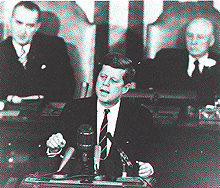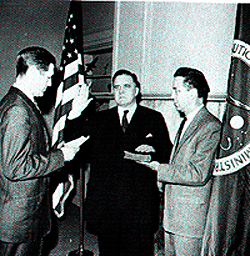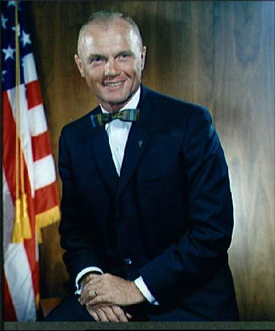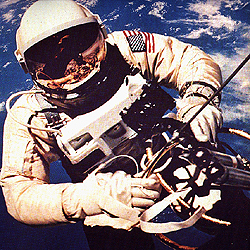|
The Legacy of Apollo ...........Kennedy inspired the nation with his aspirations of grandeur. His plan to put men on the moon did not represent as much of a commitment to science as it did to an improvement of the nations morale. But it was presented with such passion and conviction by the smooth talking president, that when presented to congress it was overwhelmingly approved. The projected price tag: an incredible $25 billion dollars (Crouch, 61). Amazingly, the critics’ voices were weak in the decision to spend this much tax money on a manned moon mission (Crouch, 61). It was a mission that even top officials acknowledged was going ahead for "…important national objectives other than science"(Collins, 98). The plans proceeded nonetheless, comprising what could honestly be deemed modern mankind’s most ambitious undertaking. |
|



